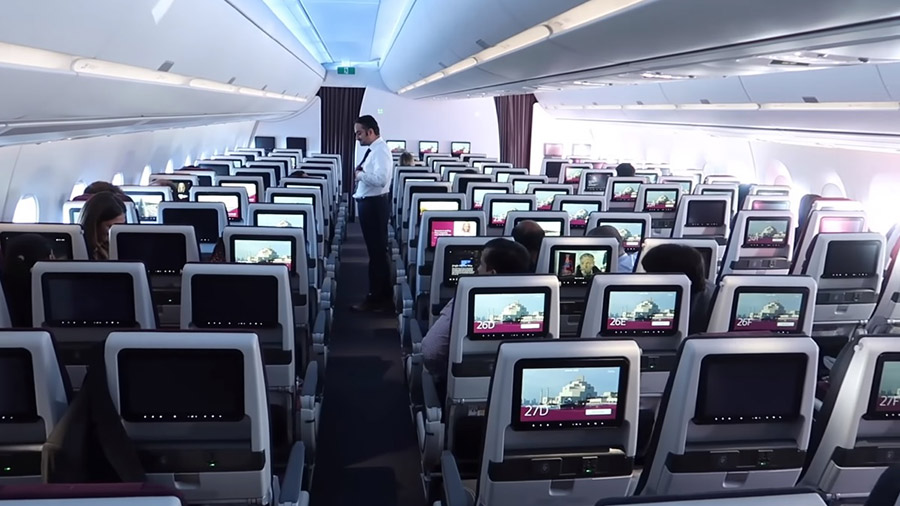Over the past several months, Qantas has finally started to take concrete steps towards making its long rumored project Sunrise a reality. Qantas has announced which aircraft manufacturer would supply the new jets needed to fly between London and Sydney. That manufacturer turns out to be Airbus and those planes are A350s, but what led Qantas to go with Airbus instead of Boeing?

First it’s important to note what type of A350 Qantas intends to operate. Currently three A350 variants exist, the A350-900, 900ULR and the 1000. That grouping is about to get just a bit bigger though, since Airbus will be building an all-new A350 variant for Qantas. This new plane ostensibly called the A350-1000ULR, will be nearly identical to the A350 1000.
At first, this might seem like an odd choice. Qantas has publicly stated that they only intend to put about 300 seats on board, but the 1000 can carry 370. In comparison, the A350-900, the little brother of 1000, has an optimal seating capacity that’s much closer to that 300 seat mark.

By going with this larger plane, Qantas is signalling that it is foregoing operating costs in favor of passenger comfort. Qantas will now have the flexibility to experiment with new cabin features, such as lounges and exercise areas, ensuring customers can stay sane during their 20 hours in the air.

The interior of this 1000ULR will feature a much less dense configuration. The exterior will look identical to the 1000, the only real difference between these two planes is that Airbus will add additional fuel tanks to the 1000ULR. This is a necessity since the 1000’s range is well short of the distance between London and Sydney. Making such modification should be relatively easy, meaning the plane will be available pretty soon.

This is the key reason why Qantas went with this jet, rather than what Boeing had offered. The plane Boeing had originally brought to Qantas was their 777-8, a plane that’s yet to be built.

Not only have engine issues pushed back the Boeing’s 777-8’s first flight, but there’s also a growing sense that Boeing is deep prioritizing its development as engineers continue to address a fix for the troubled 737 MAX.
Meanwhile, the A350-1000 has been flying reliably for a couple of years now, and the majority of its teething issues have already been ironed out. At the end of the day, Qantas probably just sees the A350-1000 as a much safer bet than the 777-8.
Another factor Qantas is taking into account is fleet commonality. As it stands right now, Qantas has 90 Boeing jets in its fleet and just 40 Airbus. Conventional wisdom would lead one to think that Qantas would favor Boeing in this instance, however it’s important to note that of those 90 Boeing jets, just 15 of them are widebodies. Meanwhile all of Qantas 40 Airbus jets are intended for long-haul operations.
From a training and maintenance perspective, going with Airbus makes a lot of sense. Since the majority of Qantas long-haul pilots and cabin crews already fly Airbus widebodies. It’ll be faster and cheaper to train them on new A350s, than it would on new Boeing jets.

It’s important to note that Qantas has not yet placed an order for these jets. Their intention to purchase 12 of them is contingent on whether or not Qantas can reach agreements with regulators and flight crews, to begin operation.

The reason Qantas is announcing this now, is that it ultimately allows them to begin working more closely with Airbus to refine the exact specifications of the jet. Ultimately, this will ensure a smooth entry into service once the program has the green light.









